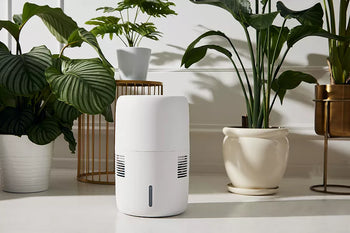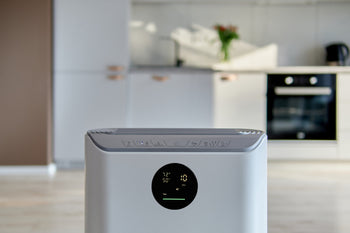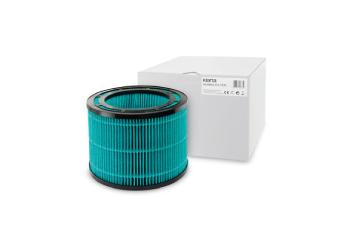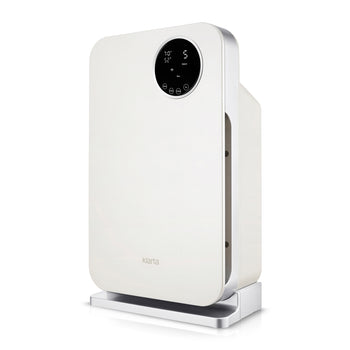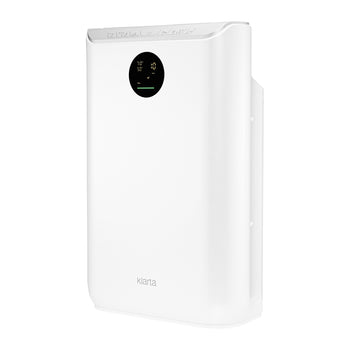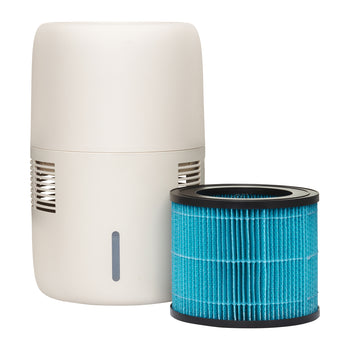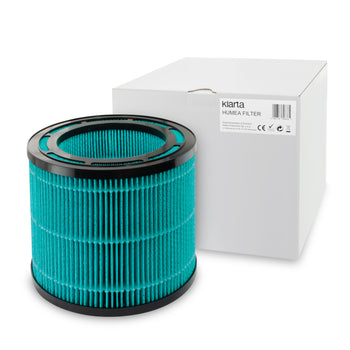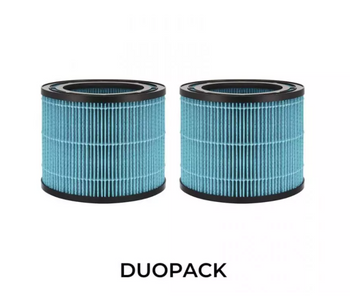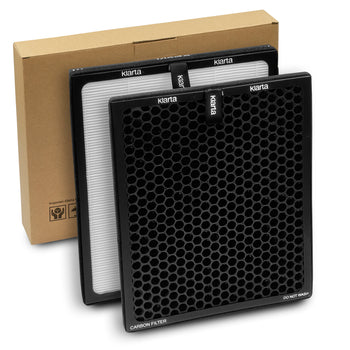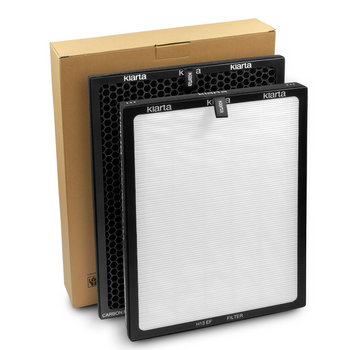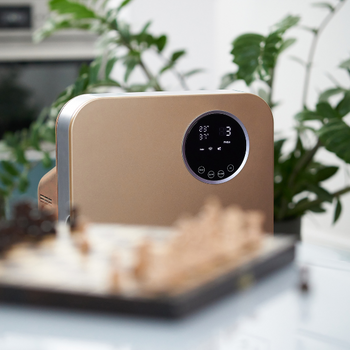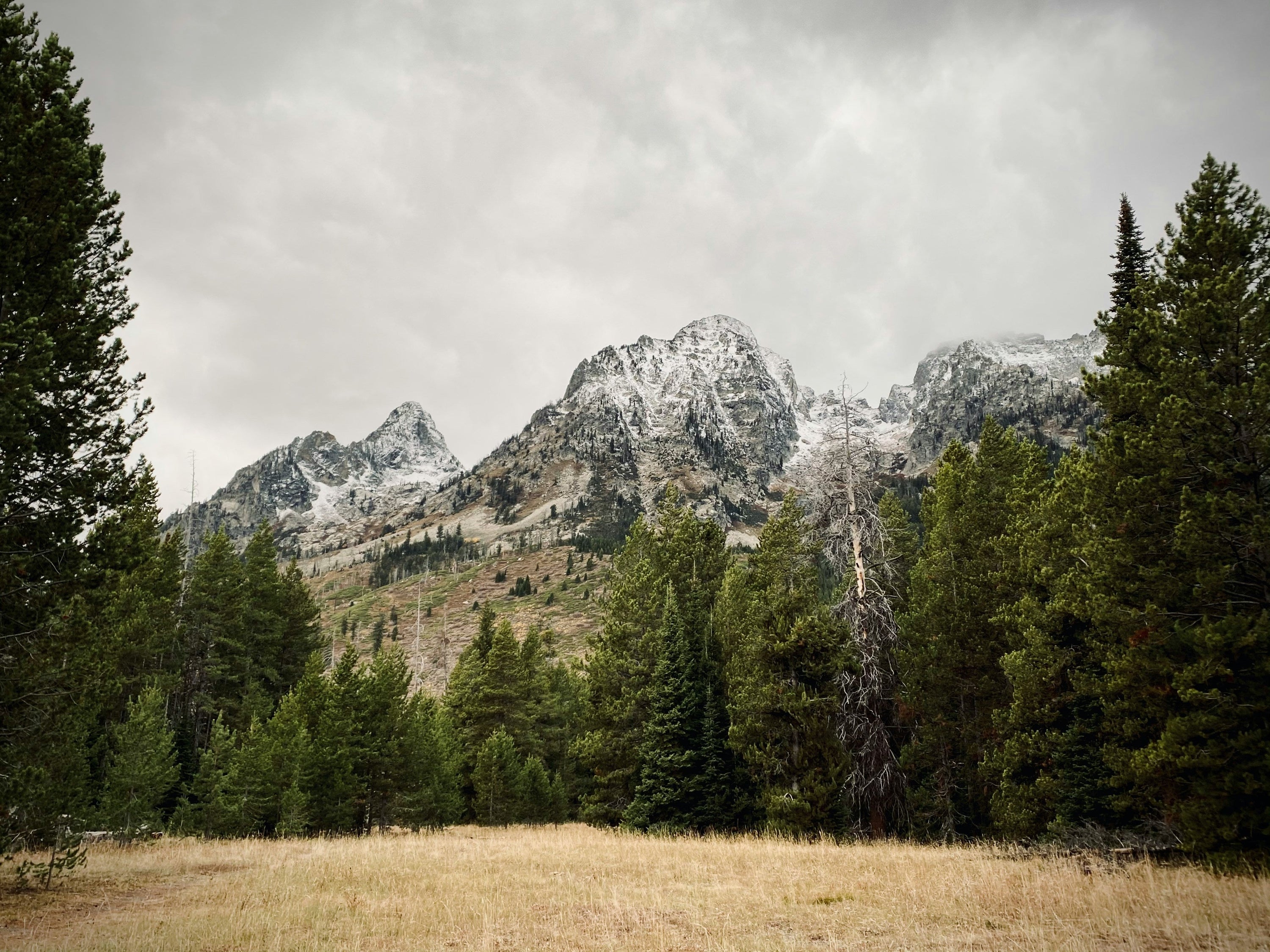
Evaporative humidifier – a natural choice for states to combat hard water
85% of Americans have hard water in their taps. Only 30% in this group use any kind of water softener. Among the cities with the hardest water in the country, some standouts are Indianapolis, Las Vegas, Minneapolis, San Antonio, and Phoenix.
Evaporative humidifiers, which capture calcium and magnesium compounds on their filters, prevent them from gathering on furniture and in respiratory tracts. How does an evaporative humidifier work? Can an evaporative humidifier use tap water? Is it safe to breathe in humidifier mist? This blog will answer these common questions and more.
Evaporative humidifier – advantage through technology
How does an evaporative humidifier work, and what advantages does it bring?
The core component of every evaporative humidifier is its filter. Composed of densely woven fibers, it effectively captures mineral compounds (such as calcium and magnesium, responsible for water hardness) and impurities that may be present in the water, particularly when it remains stagnant in the tank for an extended period.
This marks a significant difference from ultrasonic humidifiers, which simply break water into fine particles along with any dissolved substances, largely without any filtration.
It’s easy to imagine the unhygienic consequences of failing to regularly replace the water, or a prolonged water stagnation in the tank.
More on the difference between the two popular types of air humidifiers:
Evaporative type of filtration brings in a fine mist that has been previously filtered and humidified. This is made possible by the combination of an evaporative filter and a motor that sets the airflow in motion.
As a result, moisture from the water-soaked filter evaporates more quickly and is evenly distributed throughout the room.
Choose Klarta evaporative humidifiers for a healthier way to moisturize your air.
Klarta Humea WiFi – how is the humidification process being conducted?
The core elements of Klarta Humea WiFi are the two aforementioned: the evaporative filter and a motor. Thanks to them Humea WiFi resembles a process occurring in nature.
A fan draws dry air through the lower intake vents, forcing it to pass through a moist evaporative filter (within the water tank).
This mechanism can be compared to a large water container that gradually releases moisture into a drier environment. Here, the process has been enhanced by incorporating a fan to accelerate water evaporation and an evaporative filter to prevent impurities from being dispersed into the room.
As a result, the air released into the room through the upper outlet is humidified and purified, devoid of potential bacteria and mineral residue.
The final outcome (humidifying effectiveness) depends on filter size and motor power. Klarta Humea WiFi offers an impressive 300 ml per hour efficiency, being able to moisturize a surface up to 475 ft2.
3 most important Klarta Humea WiFi assets
-
Humidity control at hand – equipped with a hygrometer, humidistat and auto mode, Klarta Humea WiFi is a smart evaporative humidifier, which allows to control and maintain your desirable humidity levels with ease. Backlit LED control panel and a functional mobile app will make it even more convenient.
-
Easy to maintain - despite having a filter needing periodic cleaning, evaporative humidifier is simple to maintain it clean, as long as you follow some basic principles relating to water refill and tank sluicing.
Below you can find a list of our reccommendations, which will help enjoy a long-lasting, trouble-free experience: How to use the Klarta humidifier so that the filter lasts up to 6 months?
-
Evaporation technology saves money – thanks to its water filtration system, you don’t need to invest in expensive demineralized or distilled water. Instead of it, you can simply rely on tap water, without any concerns about the mineral dust, which is particularly important for States with hard water, e.g., Indiana, Nevada, or Wisconsin.
Water hardness across the U.S. – where evaporative humidifiers will work out above all?
Source: Canva.com
Water hardness varies across the United States, with some states experiencing significantly harder one - due to higher concentrations of calcium and magnesium.
The U.S. Geological Survey (USGS) categorizes water hardness as follows:
-
Soft: 0-60 mg/L of calcium carbonate
-
Moderately hard: 61-120 mg/L
-
Hard: 121-180 mg/L
-
Very hard: More than 180 mg/L
Based on this, the following states have the hardest water in the United States (often exceeding 180 mg/L)
-
Indiana
-
Wisconsin
-
Nevada
-
New Mexico
-
Arizona
-
Utah
-
Texas
-
California
-
Kansas
You can see that midwestern and southwestern states tend to have the hardest water due to their geological composition, which includes limestone and other mineral-rich deposits.
Many residents in these areas use water softeners to reduce scaling and improve soap efficiency. The situation is also quite comprehensively represented in the governmental map of water hardness.
Source: United States Geological Survey. usgs.comf
For more information about the hydrological situation in particular states, read our article: The 10 Most Dry States in the U.S. and Why Residents Need a Humidifier.
Sources:
1. Map of water hardness in the United States. Water Resources Mission Area, Map edited by USEPA, 2005. Modified from Briggs, J.C., and Ficke, J.F., 1977, Quality of Rivers of the United States, 1975 Water Year -- Based on the National Stream Quality Accounting Network (NASQAN): U.S. Geological Survey Open-File Report 78-200. https://www.usgs.gov/media/images/map-water-hardness-united-states. Access to website: 2025-03-24
